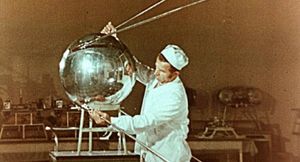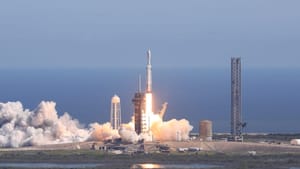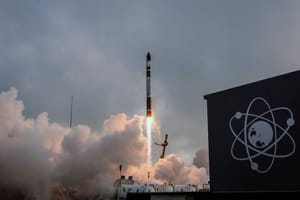
Oct 5, 2023
Sputnik - Catalyst for the Space Age
In October 1957 the people of Earth became aware of a second satellite circling the planet, this one however was artificial and man-made.
Sputnik-1 was the first artificial satellite launched from Earth on the 4th of October 1957 from Baikonur Cosmodrome in the Union of Soviet Socialist Republics atop of a modified R-7 ICBM. Sputnik-1 weighed just eighty-four kilograms and was fifty-eight centimeters in diameter with four antennas.
Sputnik-1 verified to its engineers that its pressurized aluminum-magnesium-titanium alloy housing worked in space and being able to track spacecraft using radio equipment through the atmosphere. The spacecraft was able to stay in contact for twenty-two days and decayed into the atmosphere on the 4th of January 1958, ninety-three days after launch.

The initial reaction outside of Eastern Block were fears over what could be done with a Soviet lead in space who believed the United States of America had a technological lead. The select members of the American government however were aware of Soviet space progress from overflights with spy planes.
Sputnik was able to be heard with amateur radio equipment worldwide at frequencies of 20.005 and 40.002 MHz. The radio signals were a series of beeps to allow for the tracking of the satellite (the beeps can be heard here).
The Soviet government was keen to use Sputnik for and in its propaganda, encouraging its citizens to tune in to its signals and look for it in the night sky. Secretary Khrushchev pushed engineers and scientists to launch a second spacecraft for the fortieth anniversary of the October Revolution, which was Sputnik-2 and launched on the 3rd of November 1957.

Sputnik inspired a generation of engineers and scientists worldwide, a few notable people being Alan Shepard, the first American in space, and Harrison Storms, the designer responsible for the X-15 rocket plane and head of efforts to design the Apollo spacecraft.
Once the United States had caught up with the launch of Explorer-1 both countries engaged in the space race which saw dozens of firsts for both countries and for humanity. Both countries made large strides in human spaceflight and technology ending in the Apollo-Soyuz test project, a collaborative effort between the two superpowers. The Apollo-Soyuz test project laid the foundations for what would eventually become the International Space Station, the largest orbiting outpost ever built.



